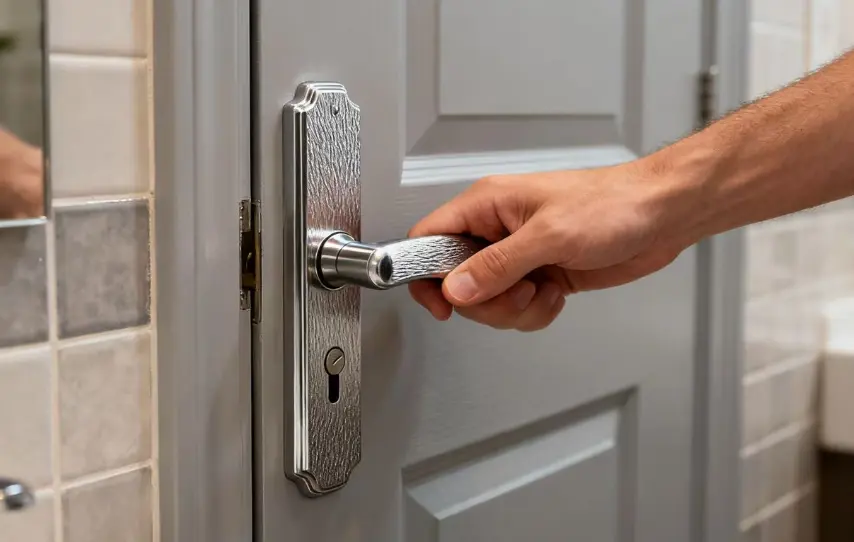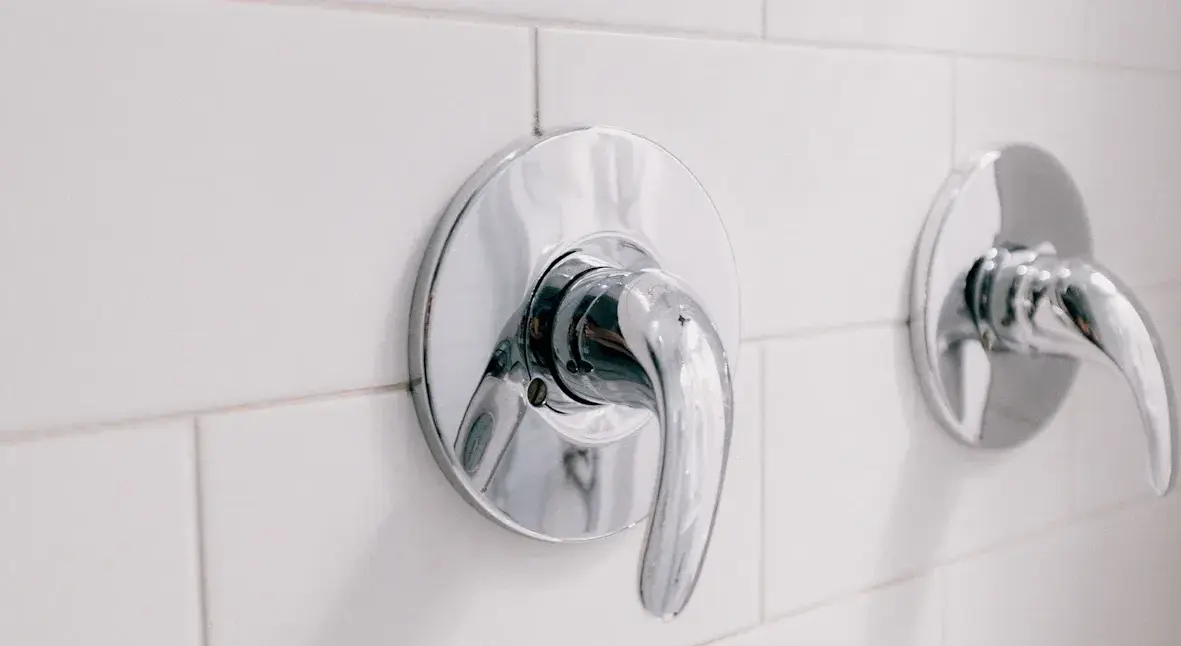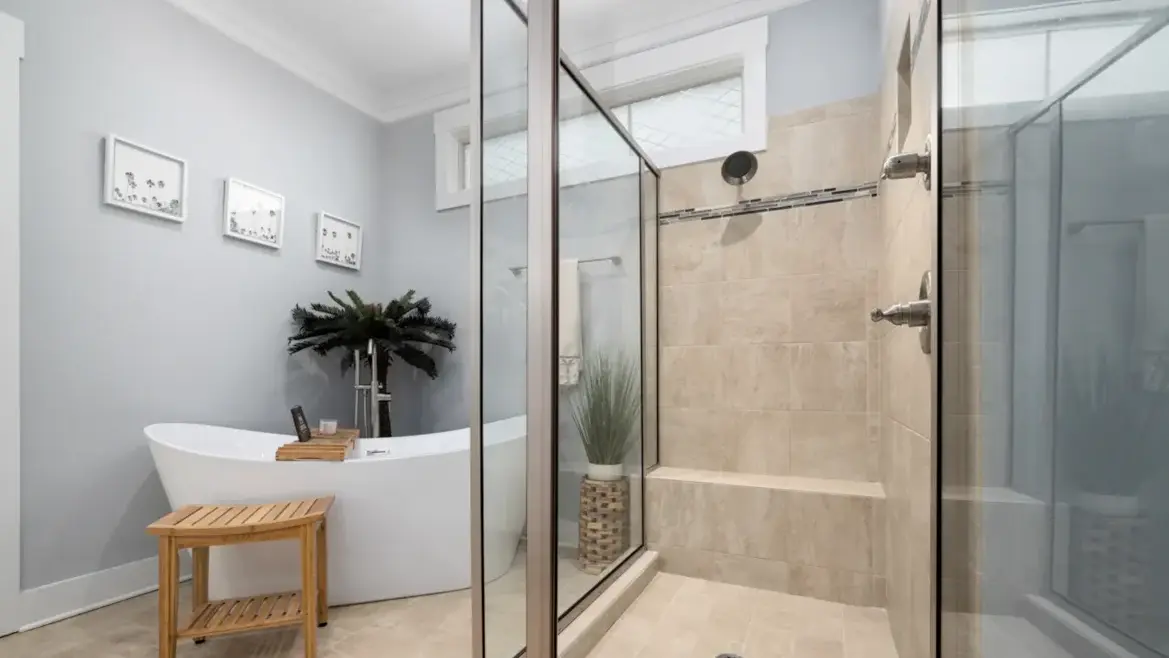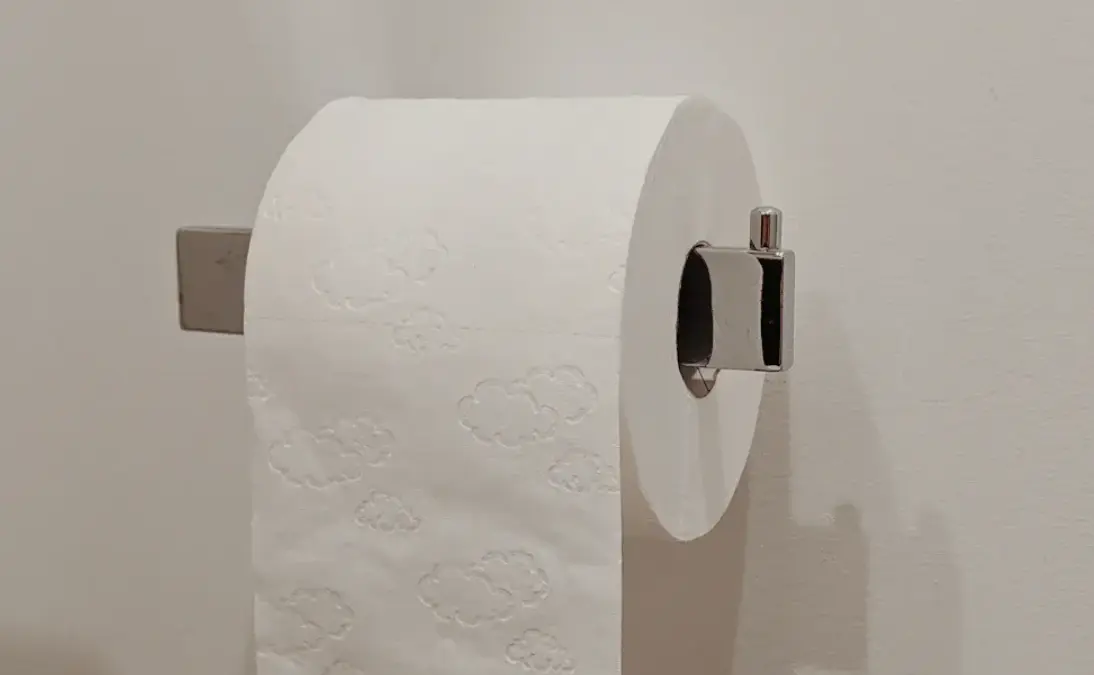Lead-Free Basin Faucets: Safe Drinking Water Compliance for Residential and Commercial Use
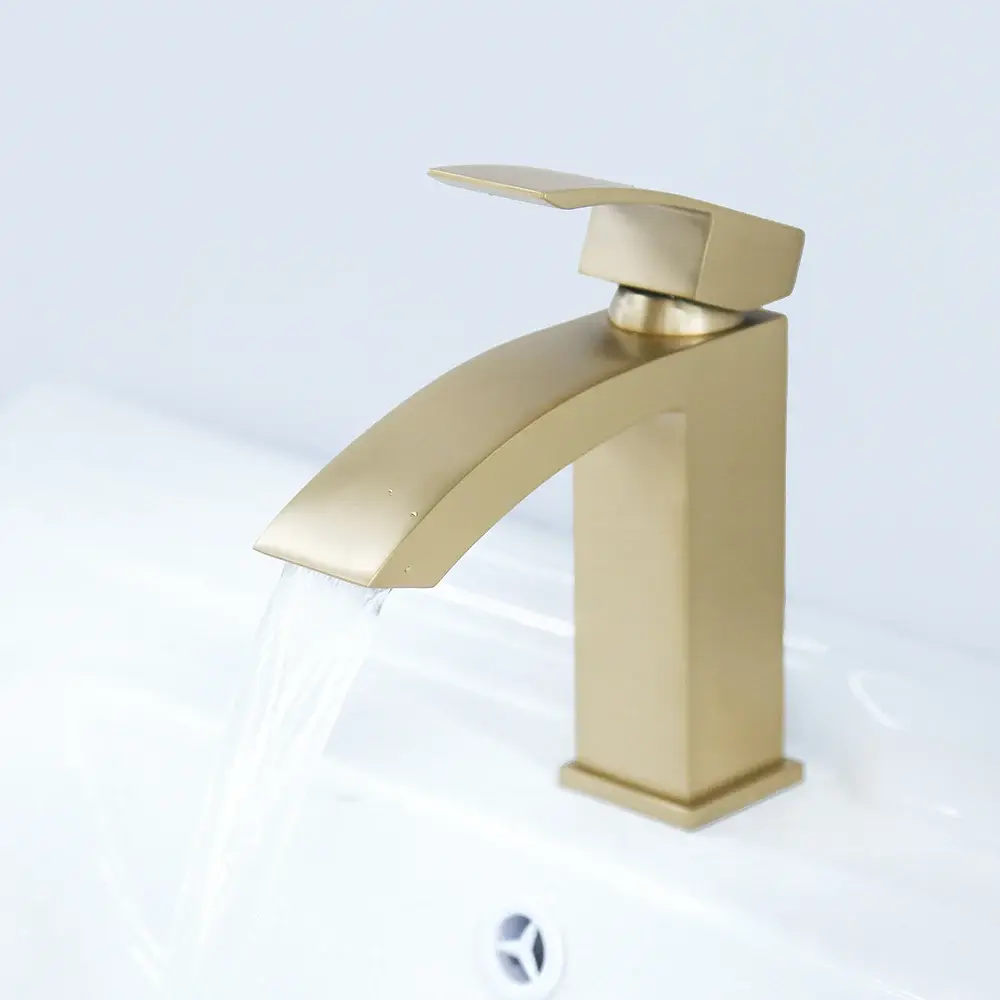
"Lead-free" for a Basin Faucetsignifies that its wetted surfaces contain very low levels of lead, typically below 0.25%. This standard ensures water passing through the fixture remains safe. Lead-free faucets are crucial because lead exposure, even at low levels, severely impacts human health. Research consistently shows lead causes neurodevelopmental effects in children, including IQ loss and learning disabilities. There is no known safe level of lead in the human body. A Modern Basin Faucet Zinc Alloy Hot and Cold Mixer Ceramic Faucet, featuring aZamak Zinc Alloy Faucet Handle with Chrome Plated, exemplifies modern compliance. These fixtures prevent lead from leaching into drinking water, protecting vulnerable populations and public health.
Key Takeaways
- Lead-free faucets keep drinking water safe. They have very little lead, less than 0.25%.
- Lead is bad for health. It harms children's brains. No amount of lead is safe.
- Laws like the Safe Drinking Water Act make sure faucets are lead-free. This protects everyone.
- Look for special marks like NSF/ANSI 61 or 372. These show a faucet is lead-free and safe.
- Manufacturers, stores, and plumbers must follow lead-free rules. This keeps the water supply safe.
- Homeowners should choose lead-free faucets. Replace old faucets to reduce lead risk.
- Modern faucets use strong materials. They work well and look good. They also help save water.
Defining 'Lead-Free' in Plumbing Fixtures
Understanding the term "lead-free" in plumbing fixtures is essential for ensuring safe drinking water. This definition goes beyond simply having no lead at all. Instead, it refers to very specific, low thresholds for lead content in materials that contact potable water. Regulations establish these thresholds to protect public health.
Weighted Average Lead Content Standards
0.25% for Wetted Surfaces
Current regulations specify a strict limit for lead content in plumbing components. The weighted average lead content for wetted surfaces of pipes, pipe fittings, plumbing fittings, and fixtures must not exceed 0.25 percent. This standard applies to any part of the fixture that comes into contact with drinking water. The law specifically limits the amount of lead in these wetted surfaces to a weighted average of 0.25% lead or less. This ensures that water flowing through these fixtures remains safe for consumption.
Calculation Methods for Compliance
Manufacturers use specific calculation methods to determine compliance with the 0.25% weighted average standard. They consider the total surface area of all wetted components and the lead content of each material. This involves a precise formula that weighs the lead percentage of each material by its surface area in contact with water. This rigorous approach ensures that even if a small component contains a slightly higher lead percentage, the overall average for the entire wetted surface remains below the legal limit. This method prevents significant lead leaching into the water supply.
Lead Limits for Solder and Flux
0.2% for Solder and Flux
Solder and flux also have specific lead content limits when used in potable water systems. The U.S. Congress amended the Safe Drinking Water Act in 1986. This amendment prohibited the use of non-'lead free' pipes, solder, or flux. At that time, 'lead free' for solder and flux was defined as containing no more than 0.2% lead. Today, solder and flux for soldered joints in potable water piping must still be lead-free. 'Lead-free' for solder and flux means containing not more than 0.2 percent lead.
Importance of Solder Composition
The composition of solder plays a critical role in preventing lead contamination. Traditional solders often contained high levels of lead, which could leach into drinking water over time. The strict 0.2% lead limit for solder and flux ensures that these joining materials do not introduce lead into the water system. Manufacturers now use alternative alloys, such as tin-silver or tin-copper, for plumbing applications. This change eliminates a significant source of potential lead exposure in older plumbing systems.
Components Subject to Lead-Free Requirements
Faucets and Drinking Water Fixtures
Federal regulations apply lead-free requirements to a wide range of plumbing components. This includes faucets and various drinking water fixtures. Specifically, these requirements cover:
- Pipes: Conduits, conductors, tubing, or hoses, potentially including permanently attached end fittings.
- Pipe fittings: Pieces like couplings, elbows, or gaskets used for connecting pipe lengths or other plumbing components, or to change direction.
- Plumbing fittings: Components controlling water volume and/or directional flow, such as Kitchen Faucets, bathroom lavatory faucets, manifolds, and valves.
- Fixtures: Receptacles or devices connected to a water supply or drainage system. This category includes drinking water coolers, fountains, bottle fillers, dishwashers, plumbed-in devices (e.g., point-of-use treatment, coffee makers, refrigerator ice/water dispensers), water heaters, meters, pumps, and tanks, if used for potable purposes.
- Solder: Metal used to join other metal parts without melting them, typically in wire rolls or bars.
- Flux: Substance aiding in melting or joining metals by removing oxides and other coatings before soldering or other joining methods.
Other Plumbing Materials in Contact with Potable Water
The lead-free requirements extend beyond just faucets to other plumbing materials that contact potable water. However, certain components are exempt from these strict lead-free standards. These exemptions typically apply to items not intended for human consumption or those with minimal contact with potable water. Exempt items include:
- Pipes, pipe fittings, plumbing fittings, or fixtures, including backflow preventers, used exclusively for nonpotable services (e.g., manufacturing, industrial processing, irrigation, outdoor watering, or any other uses where the water is not anticipated to be used for human consumption).
- Toilets, bidets, urinals, fill valves, flushometer valves, tub fillers, shower valves, fire hydrants, service saddles, and water distribution main gate valves (provided that such valves are 2 inches in diameter or larger).
- Clothes washing machines, emergency drench showers, emergency face wash equipment, eyewash devices, fire suppression sprinklers, steam capable clothes dryers, and sump pumps.
These exemptions recognize that not all plumbing components pose the same risk of lead exposure. The focus remains on materials directly involved in delivering drinking water.
Note: Always verify a product's lead-free certification, especially for items that will contact drinking water. Look for specific labels and standards.
The Regulatory Framework for Lead-Free Water
The journey toward lead-free water systems involves a robust framework of federal and state regulations. These laws establish the standards and enforce compliance, ensuring the safety of drinking water for everyone. Understanding this regulatory landscape is crucial for manufacturers, installers, and consumers.
The Safe Drinking Water Act (SDWA)
The Safe Drinking Water Act (SDWA) forms the cornerstone of federal efforts to protect public health from contaminants in drinking water. Congress passed the SDWA in 1974. It authorizes the U.S. Environmental Protection Agency (EPA) to set national health-based standards for drinking water.
Original Lead Provisions
The SDWA initially addressed lead in plumbing through significant amendments. After June 1986, the Act prohibited the use of any pipe, fitting, fixture, solder, or flux that was not lead-free in public water systems or plumbing providing water for human consumption. This early provision aimed to stop the introduction of new lead sources into drinking water infrastructure. The SDWA also prohibited introducing non-lead-free plumbing materials into commerce, except for manufacturing or industrial uses. These original provisions laid the groundwork for future, stricter regulations.
Key Amendments and Updates
Over time, the SDWA underwent several key amendments to strengthen lead regulations. Section 1417 of the SDWA now defines 'lead free' as a weighted average of 0.25% lead across wetted surfaces of pipes, fittings, and fixtures. It also specifies 0.2% lead for solder and flux. The Act includes a methodology for calculating the weighted average of wetted surfaces. This ensures precise measurement and compliance.
The SDWA also outlines specific exemptions from lead-free requirements. These exemptions apply to plumbing devices used exclusively for non-potable services. They also include specific items such as:
- Toilets
- Bidets
- Urinals
- Fire hydrants
- Water distribution main gate valves 2 inches or larger
As of September 1, 2023, the SDWA requires 'lead free' certification for manufacturers and importers of regulated plumbing products. This update enhances accountability throughout the supply chain.
Reduction of Lead in Drinking Water Act (RLDWA)
The Reduction of Lead in Drinking Water Act (RLDWA) significantly strengthened the SDWA's lead-free provisions. Congress passed RLDWA in 2011. It further protected public health by lowering the permissible lead content in plumbing products.
Lowering the Lead Content Threshold
RLDWA dramatically reduced the maximum allowable lead content in plumbing fixtures. Before RLDWA, the standard permitted a much higher lead percentage. The new law established a stricter definition of 'lead-free'.
| Aspect | Before RLDWA | After RLDWA (RLDWA) |
|---|---|---|
| Maximum Lead Content | 8% | 0.25% (weighted average) |
| Calculation Method | Not specified | Statutory method established |
| Leaching Standards | Required compliance with voluntary standards | Requirement eliminated |
This change from 8% to a 0.25% weighted average represented a monumental shift. It drastically reduced the potential for lead leaching from new plumbing products.
Nationwide Implementation and Scope
RLDWA's provisions took effect nationwide in January 2014. This ensured a consistent standard for lead content across all states. The Act applies to all pipes, fittings, and fixtures used in public water systems and any plumbing providing water for human consumption. Its broad scope ensures that nearly all new plumbing installations and replacements must meet the stringent 0.25% lead-free standard. This nationwide implementation provides a uniform level of protection for drinking water.
State-Level Regulations and Federal Harmonization
State-level regulations have played a crucial role in shaping and influencing federal lead-free plumbing standards. States often act as innovators, implementing stricter rules that later become national benchmarks.
California's AB 1953 Influence
While California's AB 1953 is a prominent example of state leadership, other states also significantly influenced federal policy. For instance, the 1989 Pennsylvania Plumbing System Lead Ban and Notification Act, effective in 1991, extended lead regulations to include private water supplies. This act mandated 'lead-free' pipe, fittings, and fixtures for new construction and replacement parts. Pennsylvania later amended its Lead Ban Act in 2014 to align with the federal RLDWA's redefinition of 'lead-free' to up to 0.25% lead on surfaces in contact with drinking water. Historically, state-level plumbing code regulations in Pennsylvania and Massachusetts also saw changes regarding lead use. These state actions demonstrate how local regulations can influence the trajectory of federal standards. They often push for greater protections that eventually become national law.
EPA's Role in Enforcement and Guidance
The EPA plays a critical role in enforcing federal lead-free regulations and providing guidance. The agency develops and implements rules under the SDWA and RLDWA. It also offers technical assistance to states and water systems. The EPA ensures compliance through monitoring, inspections, and enforcement actions. It also publishes guidance documents and resources. These resources help manufacturers, distributors, installers, and consumers understand and meet lead-free requirements. The EPA's oversight is essential for maintaining the integrity of the nation's drinking water supply.
Note: Always consult the latest EPA guidelines and state-specific regulations for the most current compliance information.
Compliance Requirements for Stakeholders
Ensuring safe drinking water requires a collective effort from all parties involved in the plumbing product lifecycle. Each stakeholder holds specific responsibilities to uphold lead-free standards.
Manufacturers and Importers Responsibilities
Manufacturers and importers form the first line of defense against lead contamination. Their adherence to regulations is paramount.
Product Design and Material Selection
Manufacturers must proactively integrate lead-free principles into product design. Designers provide specific information in purchase orders regarding material type, final finish, and RoHS compliance requirements. This approach ensures the use of appropriate materials supporting recycling, reuse, and adherence to legislative directives. It moves towards eliminating hazardous materials beyond just lead. Manufacturers also source certified and RoHS compliant materials from trusted suppliers, ensuring detailed documentation and test reports. They conduct regular testing of incoming materials using tools like XRF and thermal analyzers to verify compliance with restricted substance limits. For instance, lead content must remain below 1000 ppm.
Quality Control and Testing Protocols
Rigorous quality control and testing protocols are essential. Manufacturers of lead-free Basin Faucets must adhere to third-party certification requirements. Compliance with NSF/ANSI/CAN 61: Q ≤ 1 standard for lead leaching is mandatory. They also require compliance with NSF 372 for lead content, ensuring a maximum weighted lead content of 0.25 percent. The Safe Drinking Water Act mandates these standards. New requirements for lead leaching came into full effect on January 1, 2024. Third-party certification for lead-free plumbing materials has been a requirement since September 1, 2023.
Labeling and Documentation Standards
Manufacturers must provide clear and accurate labeling on all lead-free products. This includes certification marks and declarations of conformity. Comprehensive documentation, such as material safety data sheets and test reports, supports these claims. This transparency allows distributors, retailers, and consumers to verify compliance easily.
Distributors and Retailers Obligations
Distributors and retailers play a crucial role in maintaining the integrity of the supply chain.
Ensuring Product Compliance in Supply Chain
Distributors and retailers must ensure all products they handle comply with relevant lead-free regulations. They should obtain and review Children's Product Certificates (CPCs) or General Certificates of Conformity (GCCs) from suppliers to ensure product compliance. Products must have all necessary labeling and safety warnings, including tracking information, permanently affixed. Retailers must report unsafe, hazardous, or non-compliant products to the CPSC if they have information indicating a substantial risk of injury or non-compliance.
Inventory Management of Certified Products
Effective inventory management ensures only certified lead-free products reach the market. Distributors and retailers implement systems to track product certifications and expiration dates. They segregate non-compliant items to prevent accidental distribution. This proactive approach safeguards public health and maintains regulatory adherence.
Installers and Plumbers Best Practices
Installers and plumbers are critical at the point of use, ensuring proper application of lead-free products.
Selecting Compliant Faucets and Materials
Professionals must select faucets and other plumbing materials explicitly certified as lead-free. They verify product specifications and look for recognized certification marks. This ensures the installed components meet all regulatory standards.
Proper Installation Techniques
Correct installation techniques are vital to maintain the lead-free integrity of the system. Plumbers use lead-free solder and flux when making connections. They follow manufacturer guidelines to prevent contamination during the installation process.
Avoiding Non-Compliant Components
Installers must strictly avoid using any non-compliant components, even small parts like fittings or washers. Introducing a single non-lead-free element can compromise the entire system's safety. They remain vigilant in identifying and rejecting uncertified materials.
Building Owners and Operators Duties
Building owners and operators bear significant responsibility for maintaining lead-free environments. Their actions directly impact the health and safety of residents and occupants. Compliance with lead-free regulations requires diligence and proactive management.
Residential Property Compliance
Residential property owners must adhere to specific regulations, particularly for pre-1978 housing. These rules aim to protect tenants from lead exposure. Owners provide the EPA pamphlet “Protect Your Family From Lead in Your Home” to lessees. They disclose any known lead-based paint or hazards to tenants. Owners also furnish lessees with records or reports concerning lead-based paint or hazards in the unit and common areas. They ensure their agents fulfill all disclosure responsibilities. Leases for pre-1978 housing must include a specific lead warning statement. These leases also incorporate statements from the lessor regarding lead presence and from the lessee acknowledging receipt of this information.
Owners must implement robust hazard control measures. This includes stabilizing any deteriorated paint, correcting moisture leaks, and repainting if lead-based paint is present. Following paint stabilization, clearance procedures ensure satisfactory cleanup of dust, paint chips, and debris. These procedures confirm low levels of lead in settled dust. Ongoing maintenance of paint and periodic reevaluation ensure continued lead safety. Alternatively, owners conduct a risk assessment to identify lead-based paint hazards. They implement interim control measures to eliminate identified hazards. They perform clearance procedures and ensure ongoing maintenance and periodic reevaluation to prevent the reappearance of lead-based paint hazards.
Furthermore, owners verify that individuals performing renovation, repair, or painting (RRP) activities on pre-1978 properties are EPA Lead-Safe Certified. They ensure any company performing RRP activities in pre-1978 residential buildings is a Lead-Safe Certified business. Owners work with professionals or train staff in lead-safe work practices. This mitigates risks and ensures EPA compliance, especially when maintenance or repair work might disturb lead-based paint.
Commercial Property Compliance
Commercial property owners and operators also face lead-free compliance duties, especially in buildings constructed before 1978 or those with potable water systems. While specific disclosure requirements for lead-based paint might differ from residential properties, the principle of protecting occupants remains paramount. Owners ensure all new or replacement plumbing fixtures, such as Basin Faucets, meet current lead-free standards. This applies to restrooms, kitchens, and any areas providing drinking water.
During renovations or maintenance in older commercial buildings, operators must assess the potential for lead exposure. They verify that contractors performing work that could disturb lead-based paint or plumbing are EPA Lead-Safe Certified. This prevents contamination during construction activities. Regular inspections and maintenance schedules help identify and address potential lead hazards in plumbing systems. Commercial property owners prioritize the health and safety of employees, customers, and visitors by adhering to these standards.
Ensuring Product Certification and Verification
Product certification and verification are critical steps in guaranteeing lead-free compliance for plumbing fixtures. These processes provide assurance to consumers and professionals that products meet stringent safety standards.
Third-Party Certification Bodies
Independent third-party organizations play a vital role in testing and certifying plumbing products. They ensure manufacturers adhere to lead-free regulations.
Role of NSF International and ANSI Accreditation
NSF International is a prominent third-party certifier. It works to protect human health by establishing standards and certifying products. NSF/ANSI 53, for example, certifies water treatment products for removing or reducing health-related contaminants, including lead. Similarly, NSF/ANSI 58 certifies point-of-use water treatment systems using reverse osmosis to remove a wide array of contaminants, including lead. Certification to NSF/ANSI standards remains valid for one year. It requires annual re-verification to ensure consistency and compliance. NSF also assesses contaminants impacting health, such as heavy metals like lead, in dietary supplements. The organization conducts annual audits of participants in its certification programs. NSF annually retests certified products to ensure continued quality and compliance.
Other Recognized Certifiers and Standards
Beyond NSF International, other recognized certifiers and standards contribute to the lead-free landscape. These include organizations like IAPMO R&T and CSA Group. They also test products against national and international standards. Their certifications provide additional layers of assurance regarding product safety and performance.
Certification Marks and Labels
Certification marks and labels serve as clear indicators of a product's compliance. Consumers and professionals should actively look for these marks.
Identifying Compliant Products (e.g., NSF/ANSI/CAN 61, NSF/ANSI 372)
Identifying compliant products involves recognizing specific certification marks. For lead-free plumbing fixtures, look for marks indicating compliance with NSF/ANSI/CAN 61 and NSF/ANSI 372. NSF/ANSI/CAN 61 addresses health effects from drinking water system components. NSF/ANSI 372 specifically certifies the lead content of products. These marks confirm the product meets the weighted average lead content standard of 0.25% or less.
Understanding Certification Standards
Understanding certification standards empowers consumers and professionals. These standards represent rigorous testing protocols and material requirements. A product bearing an NSF/ANSI 372 mark has undergone testing to confirm its lead content. This ensures it will not leach harmful levels of lead into drinking water.
Self-Certification and Manufacturer Accountability
While third-party certification is common, manufacturers can also self-certify their products. This process places significant accountability on the manufacturer.
Manufacturer's Declaration of Conformity
A Manufacturer's Declaration of Conformity is a formal statement. The manufacturer declares their product meets all applicable regulatory requirements. This document outlines the standards the product complies with and the testing performed. It serves as a legal affirmation of compliance.
Due Diligence for Consumers and Professionals
Consumers and professionals must exercise due diligence. They should verify claims made by manufacturers, especially for self-certified products. Companies must implement technical and organizational measures to comply with data protection obligations. They must also be prepared to demonstrate compliance to the competent supervisory authority. Compliance with established principles is compulsory and enforceable once self-certification is complete. Annual recertification requires publicly declaring commitment to these principles, reviewing privacy policies and practices, and reconfirming information with relevant authorities. This ensures ongoing adherence to lead-free standards.
Practical Implications for Residential and Commercial Users

Ensuring lead-free water systems requires practical application of regulations by both residential and commercial users. Understanding how to identify compliant products and manage plumbing systems is crucial for public health.
Identifying Compliant Faucets
Identifying lead-free faucets is a critical step for consumers and professionals. This process involves careful examination of product details and certification marks.
Checking Product Specifications and Certifications
Consumers must scrutinize product specifications. Faucets bearing the WaterSense Label are high-efficiency products. EPA-approved bodies independently test and certify these products. They meet specific criteria for both performance and water efficiency. WaterSense labeled faucets have a maximum flow rate of 1.5 gallons per minute (gpm) at 60 psi. They also maintain a minimum flow rate of 0.8 gpm at 20 psi. This ensures consistent performance under varying household water pressures. For faucets dispensing water for human consumption, lead-free certification is essential. Certified faucets undergo testing to ensure proper function throughout their expected lifespan. A minimum flow rate ensures adequate flow for typical uses, even at low water pressure.
Looking for Specific Certification Marks
Specific certification marks provide clear assurance of compliance. The NSF/ANSI Standard 61 certification is crucial for faucets and plumbing products contacting drinking water. This certification ensures rigorous testing. It confirms these components do not leach harmful contaminants into the water. This maintains water quality and consumer safety.
Residential User Considerations
Homeowners face important decisions regarding lead-free plumbing, especially during renovations or when replacing old fixtures.
Home Renovation and New Construction Choices
When undertaking home renovations or new construction, homeowners must prioritize lead-free options. Always verify the presence of the UPC/NSF certification mark on the product or its packaging. This confirms adherence to strict safety standards. Ensure the faucet meets the lead-free requirements outlined in the Safe Drinking Water Act. Product specifications or the manufacturer's website typically detail these requirements. Select faucets from well-known brands recognized for their dedication to quality and safety. These companies usually conduct thorough testing and certification. Prioritize "100% Lead free" claims. Faucets merely labeled "lead free" can still contain up to 0.25% lead. Examine the waterway material, the part of the faucet directly in contact with water. This is crucial for health and toxicity. Look for certifications such as NSF/ANSI/CAN 61, indicated by an NSF mark on the packaging. This ensures low lead levels and compliance with leaching requirements. Consider stainless steel as the optimal and least toxic material for faucet waterways. Brass often contains lead. Assess if the faucet is used for drinking water or food preparation. This significantly increases the importance of ensuring it is completely toxin-free.
Replacing Older Faucets with Lead-Free Options
Replacing older faucets with lead-free alternatives is a proactive step for improving household water quality. Many older homes may have fixtures containing higher lead levels. Upgrading these fixtures reduces potential lead exposure for residents.
Commercial User Considerations
Commercial properties, from offices to restaurants, have a heightened responsibility to ensure lead-free water for employees and customers.
Public Health and Safety in Commercial Settings
Commercial settings serve a larger population. Therefore, maintaining public health and safety through lead-free plumbing is paramount. Businesses must prevent lead exposure to protect their patrons and staff.
Building Codes and Inspection Requirements
Commercial plumbing inspections often include water quality testing for contaminants like lead. This ensures the water meets health and safety standards. A primary goal of commercial plumbing inspections is to verify compliance with local plumbing codes and regulations. Inspectors identify non-compliant installations for corrective action. Plumbing in nonresidential facilities providing water for human consumption must be lead-free. "Lead free" means not more than 0.2% lead for solder and flux. It also means not more than a weighted average of 0.25% lead for wetted surfaces of pipes, fittings, and fixtures. States are mandated to enforce these lead-free requirements through state or local plumbing codes or other appropriate enforcement mechanisms. Prohibitions apply to introducing into commerce any pipe, fitting, or fixture that is not lead-free. They also apply to selling non-lead-free solder or flux, unless properly labeled for non-potable use.
Maintenance and Replacement Schedules for High-Use Areas
Commercial properties experience high water usage. This necessitates robust maintenance and replacement schedules for plumbing fixtures. Regular checks ensure continued compliance and prevent potential lead contamination from aging or damaged components.
Exemptions and Special Use Cases
While lead-free requirements are stringent for drinking water applications, specific exemptions and special use cases exist. These exceptions acknowledge that not all water uses pose the same risk of human consumption. They allow for the use of non-lead-free materials in clearly defined circumstances.
Non-Potable Water Applications
Regulations do not apply lead-free requirements to all plumbing products. Exemptions primarily focus on applications where water is not intended for human consumption. Products clearly labeled with phrases like "Not for use with water for human consumption" fall under this category. Manufacturers must ensure clear communication regarding the intended use of these items. Furthermore, products physically incapable of being used in potable services also receive exemption. Their design inherently prevents connection to drinking water systems. This ensures they do not inadvertently introduce lead into the potable supply. Finally, products plainly identifiable and marketed solely for uses other than conveying water are exempt. These include items designed for air, chemicals, hydraulic fluids, refrigerants, or gasses. The intent of these exemptions is to focus regulatory efforts on actual drinking water safety.
Specific Industrial and Agricultural Uses
Certain industrial and agricultural applications also qualify for lead-free exemptions. These sectors often utilize specialized equipment and water systems not connected to public drinking water supplies. For instance, large-scale irrigation systems for crops typically do not require lead-free components. The water from these systems does not enter the human consumption chain directly. Similarly, some industrial processes use water for cooling, cleaning, or manufacturing. This water is often treated or recycled within a closed system. It does not become potable water. The EPA and state agencies provide guidance on these specific industrial and agricultural exemptions. They ensure that public health remains protected while allowing for practical applications in these sectors. These exemptions prevent unnecessary costs and complexities for industries where lead exposure risks are negligible.
Benefits of Lead-Free Compliance and Modern Basin Faucet Zinc Alloy Hot and Cold Mixer Ceramic Faucet
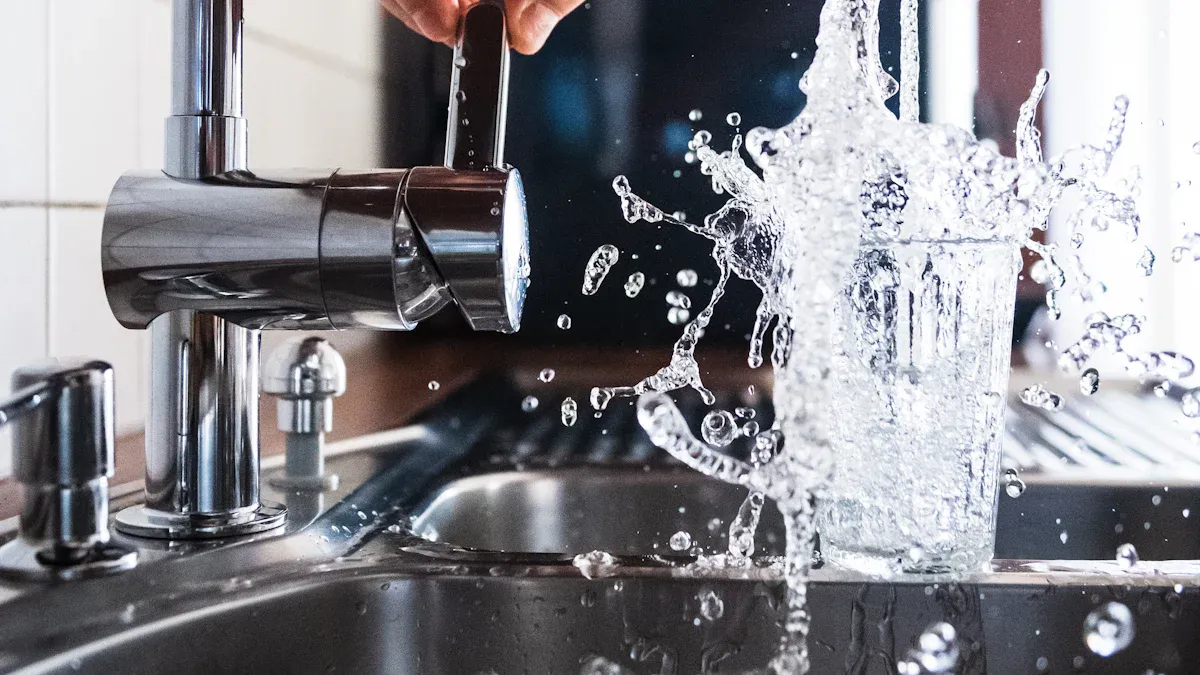
Adhering to lead-free standards offers significant advantages. These benefits extend beyond mere regulatory compliance. They encompass public health, legal standing, and environmental stewardship. A Modern Basin Faucet Zinc Alloy Hot and Cold Mixer Ceramic Faucet embodies these positive impacts.
Public Health Protection
Lead-free plumbing directly safeguards human health. It removes a major source of lead exposure from daily life.
Reducing Lead Exposure Risks
Lead-free compliance has dramatically improved public health. The United States saw a 93.6% decrease in the geometric mean blood lead level (BLL) of its population aged 1 to 74 years from 1976-1980 to 2015-2016, dropping from 12.8 to 0.82 μg/dL. This reduction is crucial because no safe level of lead exposure exists. Even low levels negatively affect IQ and behavior in children. The EPA enforces 'lead-free' standards for plumbing products. This directly prevents lead contamination in drinking water. The Safe Drinking Water Act regulates lead in drinking water. It requires public water systems to comply with national primary drinking water regulations. This includes treatment techniques, health-based standards, and monitoring. The EPA investigates compliance and takes enforcement action when necessary. Recent improvements to the Lead and Copper Rule in 2024 further strengthen these protections. They require inventories of lead pipes and more rigorous testing. Compliance is mandated by November 1, 2027.
Protecting Vulnerable Populations (Children and Pregnant Women)
Lead-free plumbing offers critical protection for vulnerable populations. Children and pregnant women face the highest risks from lead exposure. Lead can cause developmental issues in children and harm fetal development. Eliminating lead from drinking water sources significantly reduces these severe health risks.
Legal and Reputational Advantages
Compliance with lead-free regulations provides both legal protection and enhanced public perception.
Avoiding Penalties and Fines
Non-compliance with lead-free plumbing regulations carries severe consequences. Local code enforcement agencies can impose fines or other penalties. Property condemnation may occur in severe cases, forcing occupants to vacate. Contractors and customers face significant penalties. These range from warnings to stop work orders, suspension of permits, and steep daily fines until issues resolve. Regulatory bodies impose fines and penalties, varying in severity. Legal liabilities arise if a plumbing system failure causes damage or injury. This can lead to costly litigation and settlements. Architects, engineers, contractors, and building owners face potential liability. Products not meeting lead-free criteria cannot be sold or used for dispensing potable water. Fines and penalties will be assessed for non-compliance.
Building Consumer and Client Trust
Adhering to lead-free standards builds strong consumer and client trust. It demonstrates a commitment to safety and quality. Businesses and homeowners who prioritize lead-free products, like a Modern Basin Faucet Zinc Alloy Hot and Cold Mixer Ceramic Faucet, enhance their reputation. This commitment fosters confidence among occupants and customers.
Environmental Impact and Sustainability
Lead-free plumbing practices contribute significantly to environmental health and sustainability.
Sustainable Plumbing Practices
Using eco-friendly plumbing materials, such as lead-free pipes and non-toxic sealants, significantly contributes to a healthier home environment. This improves indoor air quality and ensures safer drinking water. Recycling lead-free solder reduces the need for mining and processing new metals. This preserves natural resources. Recycling lead-free solder uses approximately 50% less energy compared to producing new solder from raw materials. This helps reduce greenhouse gas emissions.
Reduced Environmental Contamination
Lead-free plumbing minimizes environmental contamination. Recycling minimizes the amount of lead-free solder waste sent to landfills. This supports a circular economy. Recycling processes generate less pollution than extracting and processing raw materials. This contributes to cleaner air and water. A Modern Basin Faucet Zinc Alloy Hot and Cold Mixer Ceramic Faucet, made with sustainable materials, exemplifies this commitment.
Advantages of Modern Basin Faucet Zinc Alloy Hot and Cold Mixer Ceramic Faucet
Modern plumbing fixtures offer significant advancements in both material science and design. A Modern Basin Faucet Zinc Alloy Hot and Cold Mixer Ceramic Faucet represents a prime example of these improvements. These faucets deliver superior performance and aesthetic appeal, meeting the demands of contemporary residential and commercial spaces.
Durability and Performance
The construction of a Modern Basin Faucet Zinc Alloy Hot and Cold Mixer Ceramic Faucet prioritizes longevity and reliable operation. Manufacturers engineer zinc alloy faucets for exceptional durability. They resist corrosion and wear effectively over extended periods. This material maintains its integrity even in high-temperature environments, preventing tarnishing or degradation. This engineering ensures a long-lasting product that remains functional and visually appealing for many years. Zinc alloy provides a robust housing for internal components.
Furthermore, the ceramic cartridge within these faucets contributes significantly to their performance. Ceramic disc cartridges offer a smooth, precise operation for controlling water flow and temperature. They are highly resistant to wear and tear, unlike traditional rubber washers. This design virtually eliminates drips and leaks, reducing water waste and maintenance needs. Users experience consistent water pressure and temperature control throughout the faucet's lifespan. This combination of durable zinc alloy and reliable ceramic technology ensures a high-performing fixture.
Aesthetic and Functional Benefits
A Modern Basin Faucet Zinc Alloy Hot and Cold Mixer Ceramic Faucet also excels in aesthetic and functional design. These faucets come in a wide array of contemporary styles and finishes. Options include polished chrome, brushed nickel, and matte black. These finishes complement diverse interior designs, from minimalist to industrial. The sleek lines and refined profiles enhance the visual appeal of any bathroom or kitchen basin.
Functionally, the hot and cold mixer design offers convenience and efficiency. Users can easily adjust water temperature with a single lever or two distinct handles. This precise control enhances user comfort and safety. Many models also incorporate water-saving aerators. These aerators reduce water consumption without compromising performance. This feature aligns with modern sustainability goals. Installation processes are often straightforward, making these faucets a practical choice for both new constructions and renovations. The smooth surfaces and durable finishes also simplify cleaning, maintaining the faucet's pristine appearance with minimal effort.
Lead-free basin faucet compliance is essential for safe drinking water. Regulations define "lead-free" strictly, protecting public health. Manufacturers, distributors, installers, and building owners all share responsibility. They must ensure products meet stringent standards.
- Always verify product certifications like NSF/ANSI 61 and 372.
- Replace older, non-compliant fixtures promptly.
This collective commitment to lead-free plumbing safeguards communities. It ensures clean, safe drinking water for everyone.
FAQ
What does "lead-free" mean for plumbing fixtures?
"Lead-free" means the wetted surfaces of pipes, fittings, and fixtures contain a weighted average of no more than 0.25% lead. For solder and flux, the limit is 0.2% lead. These standards ensure minimal lead exposure in drinking water.
Why are lead-free faucets crucial for safe drinking water?
Lead-free faucets prevent lead from leaching into drinking water. Lead exposure, even at low levels, causes serious health issues, particularly for children and pregnant women. These faucets protect public health by eliminating a significant source of contamination.
How can consumers identify a compliant lead-free faucet?
Consumers should look for specific certification marks on the product or packaging. Key certifications include NSF/ANSI/CAN 61 and NSF/ANSI 372. These marks confirm the faucet meets strict lead content and leaching standards.
Does the Safe Drinking Water Act (SDWA) apply to residential faucets?
Yes, the SDWA applies to any plumbing providing water for human consumption, including residential faucets. It mandates that these fixtures meet specific lead-free requirements to protect public health.
Are there any exemptions to lead-free requirements for plumbing products?
Yes, exemptions exist for products used exclusively for non-potable services. These include industrial processing, irrigation, or other uses where water is not intended for human consumption. Toilets and fire hydrants also have exemptions.
What role do manufacturers play in ensuring lead-free compliance?
Manufacturers must design products with lead-free materials, implement rigorous quality control and testing protocols, and provide clear labeling. They ensure their products meet all federal and state lead-free standards before market release.
What are the benefits of a Modern Basin Faucet Zinc Alloy Hot and Cold Mixer Ceramic Faucet?
These faucets offer excellent durability and reliable performance. Zinc alloy provides a robust structure, while ceramic cartridges ensure drip-free operation and precise temperature control. They also come in various aesthetic designs to complement modern spaces.

